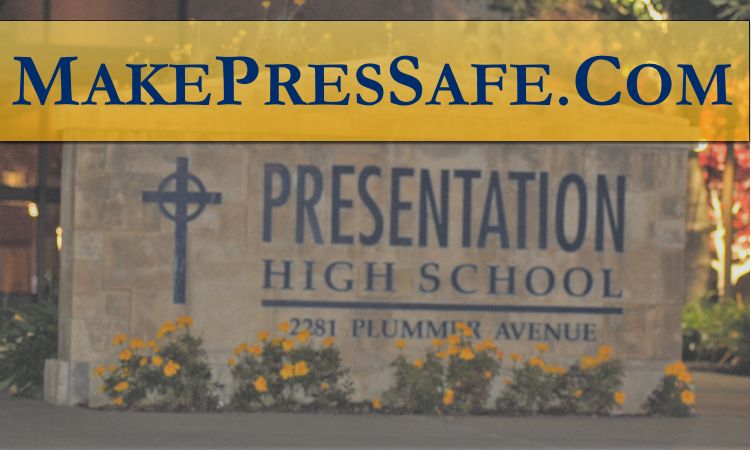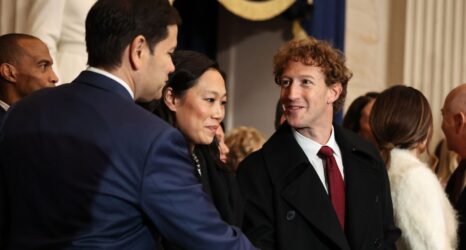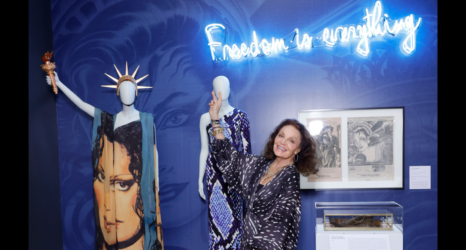I embarked upon a three-year mission to advocate for myself and the dozens of victims of childhood sexual abuse at my high school. Here’s my advice on how to confront a sexual abuse scandal at a K-12 school.

In October 2017, I wrote an op-ed for the Washington Post about the sexual abuse I endured at my private, Catholic high school and how it was mishandled by the administration. Though I didn’t disclose any names, dozens of people recognized the teacher and came forward with their own stories of mishandled abuse at the same school—by the same teacher and other instructors. I had inadvertently exposed the decades-long sexual abuse scandal.
I then embarked upon a three-year mission to advocate for myself and the dozens of victims of childhood sexual abuse. I and others relentlessly fought for strict adherence to mandated reporting laws, permanent changes in school leadership and policy, and accountability and justice for the survivors.
This article provides a #MeTooK12 case study in advocacy and activism and offers suggestions on ways to confront a sexual abuse scandal at a K-12 school—much of which would apply to both public and private schools.
Requesting to Meet with the Board of Directors
My initial step was to request a meeting with the board of directors to share with them the survivors’ stories and urge them to conduct an independent investigation, as recommended by the National Association of Independent Schools (NAIS).
The board refused to meet with me. Instead, they and school leadership issued public statements dismissing my personal account and perverting my abuse into “a warn and nurturing relationship” between student and teacher.
Undeterred, another advocate and I held a press conference to share our accounts, call on the school to initiate an investigation, and hold the perpetrators and enablers of sexual abuse accountable. Again, the board refused to meet with us, and again, they issued public statements denying our accounts. I and other survivors and witnesses participated in many news reports and even held an additional press conference to expose the severity of the scandal.
Using the Internet for Advocacy
After it was clear the board would not meet with us, I created a website, Make Pres Safe (“Pres” being an abbreviation of my high school’s name), to share the timeline of allegations of unreported abuse, support the survivors, and encourage the community to help us. I also created social media accounts on Facebook, Twitter and Instagram to put additional pressure on the school to do the right thing. (As of this publication, only the Facebook account is still active.)
I used trending hashtags, such as #MeToo, #MeTooK12, #ChurchToo and #CSA to gain more exposure in the wider Internet community.
Getting Creative in Activism
I worked with fellow advocates—mostly alums from the school—to continue our activism. We ran an online petition, engaged in a postcard campaign, wrote letters to donors, held vigils and demonstrations (during non-school hours), wrote letters to the editor of our local newspaper, and even conducted a town hall style meeting at a local community center—all while keeping the local media updated on our work to keep the scandal in the public eye. I described each of these tactics in a previous blog.
Unfortunately, because the school president and the board chair were also accused of failing to report dozens of instances of childhood sexual abuse, they would not initiate an independent investigation. To do so would have exposed their guilt. Had there been newer leadership at the school, my previous efforts might have been successful.
Engaging Church Leadership
We met with the bishop, the local Catholic church leader, a few times throughout this journey. Though the school is owned by an order of nuns who reside outside his diocese, because the school resides within his diocese, we needed his help.
We also sought support from a local priest who was supportive of our cause. This amazing priest became our advocate within the church, and he persuaded the bishop to use his influence to convince the sisters to remove the school president. (The board chair had “retired” a few months earlier.)
Continuing the Fight
Though two key school leaders had been removed and the school had enacted policy changes, they had yet to initiate an independent investigation, hold key enablers accountable, or have a compassionate response to the survivors. I met with the new board chair and school leaders to share information with them and provide suggestions for moving forward in a positive manner. Though they were polite, they failed to enact any of the changes.
For many months, I wrote regular emails to the sisters, the board of directors, and school leadership advocating for those actions. I posted several times a week on all our social media channels and kept the local media updated at every step. I presented The Accidental Advocate: Protecting Our Children from Sexual Abuse at our local rotary chapter’s meeting. I participated in the NBC Bay Area documentary, Not Words, But Deeds. I took advantage of every opportunity to keep the scandal in the public light.
Meeting with the New School President
When the school announced a new president, I emailed her to explain who I was and what the Make Pres Safe movement was all about. On her first day in the office, I sat outside in my car with a giant banner to demonstrate my commitment to the cause.
We met a few weeks later, and I found her to be compassionate and ethical. She met with many members of the community, and three months later, the school announced they would initiate an independent investigation of past sexual misconduct at the school. That investigation would take approximately nine months.
Persisting and Staying LOUD
Throughout that time, I engaged local law enforcement and local city and county leadership. Though I knew, due to statutes of limitation, criminal charges were unlikely, engaging with the police and district attorney kept the scandal in the public eye. It also made them aware of the ways in which current laws favor the predators and enabler, rather than the victims.
I also regularly attended city council and board of supervisor meetings in order to speak during the public comment portion of those meetings—all of this while staying active on Make Pres Safe social media channels and in alumni groups.
Getting Some Justice (Finally!)
Almost three years after I exposed the sexual abuse scandal, the new school president released the results of the independent investigation into allegations of past sexual abuse and misconduct, as well as a letter outlining the support they are offering to the survivors and the changes they’ve made at the school to protect all students. She demonstrated the accountability, transparency and compassion needed to provide justice for the survivors and to move forward on a healing path. As a result, I applauded the school publicly and took down the Make Pres Safe website and social media channels.
Continuing to Hold the School Accountable
One step forward, two steps back. Since the public apology and release of the report, the school has made some missteps. They rehired a woman who had repeatedly violated mandatory reporting laws and participated in a sexual-abuse coverup that allowed a pedophile to remain at the school for 20 years.
After my non-public request for her termination was dismissed, I reactivated the Make Pres Safe Facebook page to publicly call out this outrageous action the school has taken. They don’t seem to understand the negative impact to the survivors or how this action negates previous words and deeds.
Additionally, the new board of directors, announced on Sept. 1, 2020, includes many members of a former PHS advisory board, several of whom, including the new board chair, previously issued public statements declaring their unwavering support of Mary Miller, the former school president, and expressed harsh criticism of me and other survivors and advocates. Since joining the board, they have yet to issue a statement in support of the survivors. Again, after my non-public request for a statement was dismissed, I went public on Facebook and with a letter to the editor in our local newspaper.
Summarizing the Activism
Fighting for justice is challenging, exhausting and often frustrating. My advice is to partner fellow advocates and the media, get LOUD and creative (taking breaks when necessary), and persist, persist, persist.
Hopefully this case study provides you with some concrete suggestions for your own advocacy.
Additionally, here is a timeline of my activism.
Up next:












